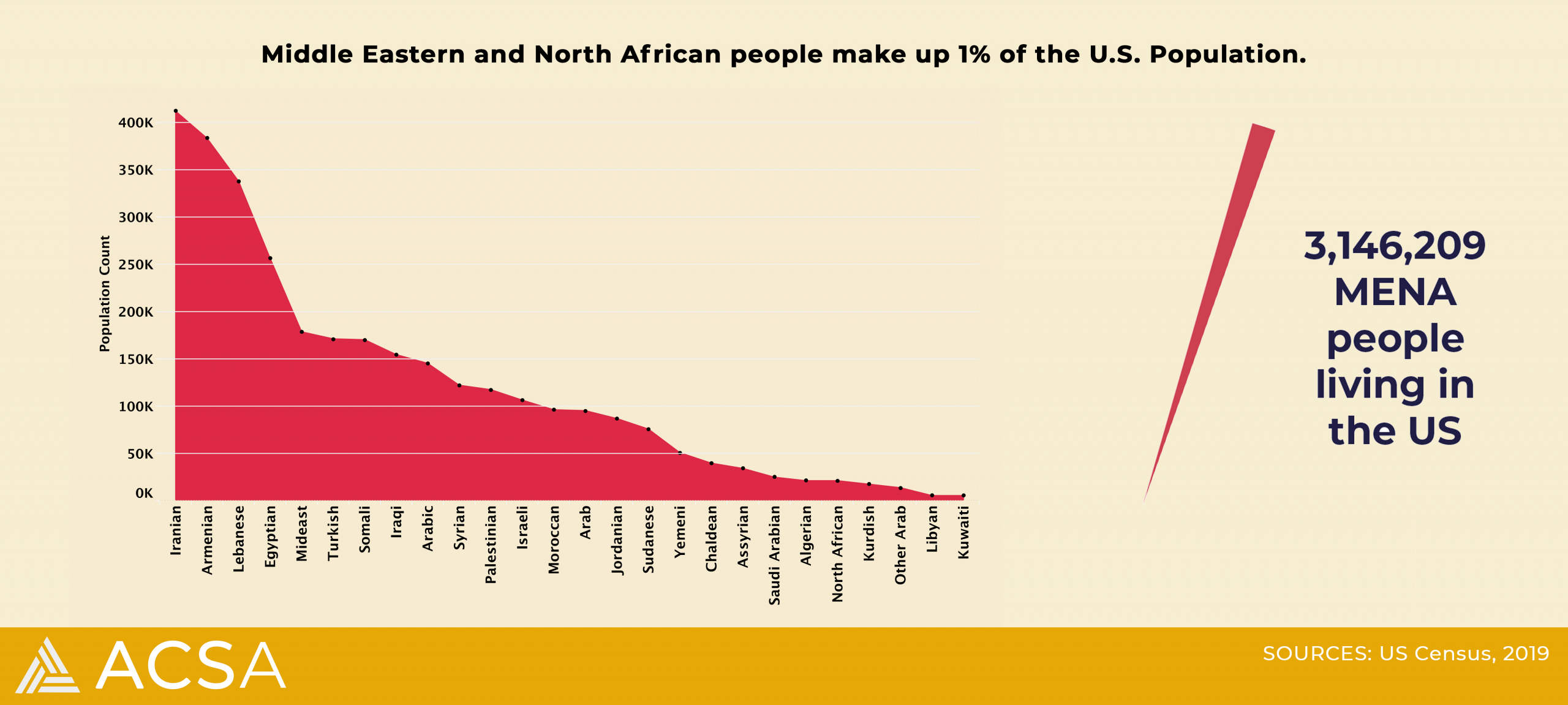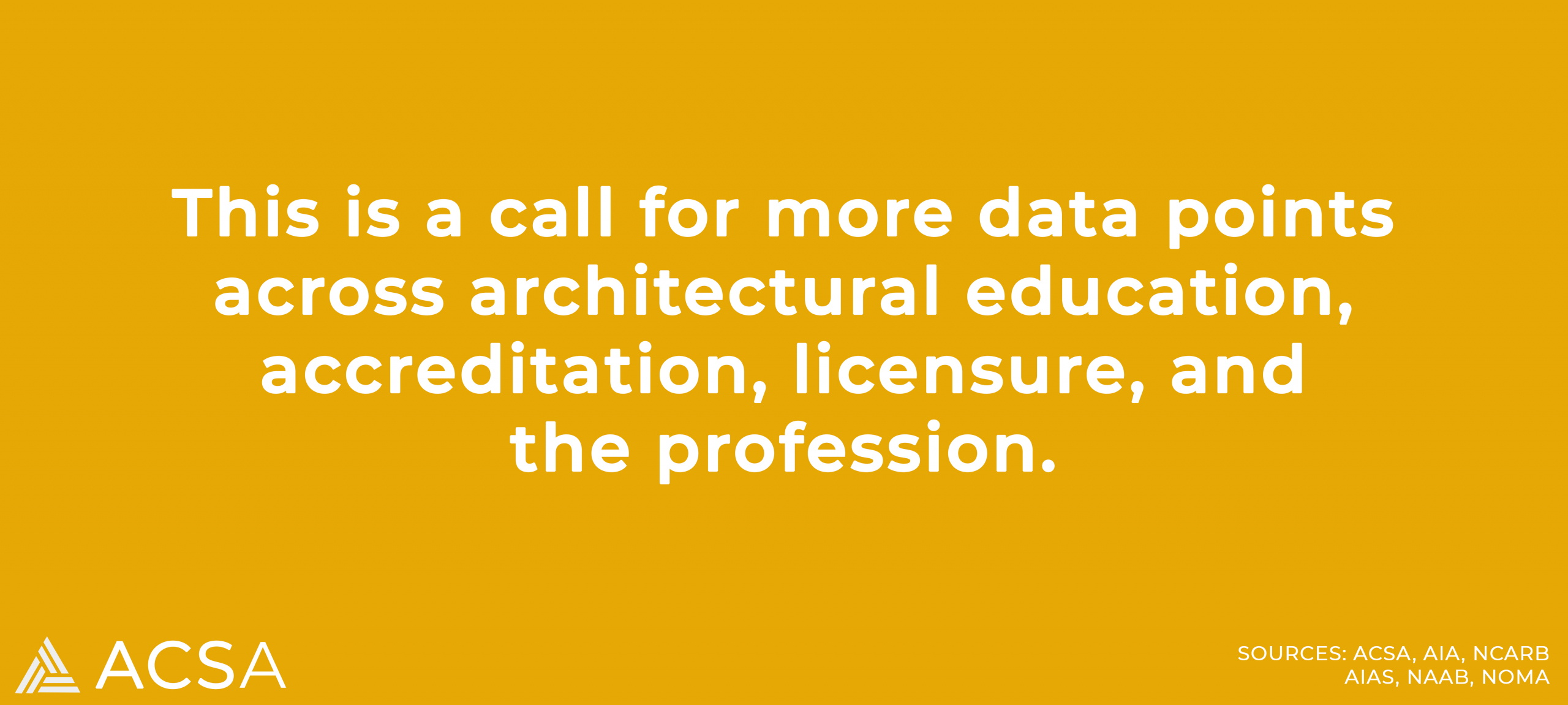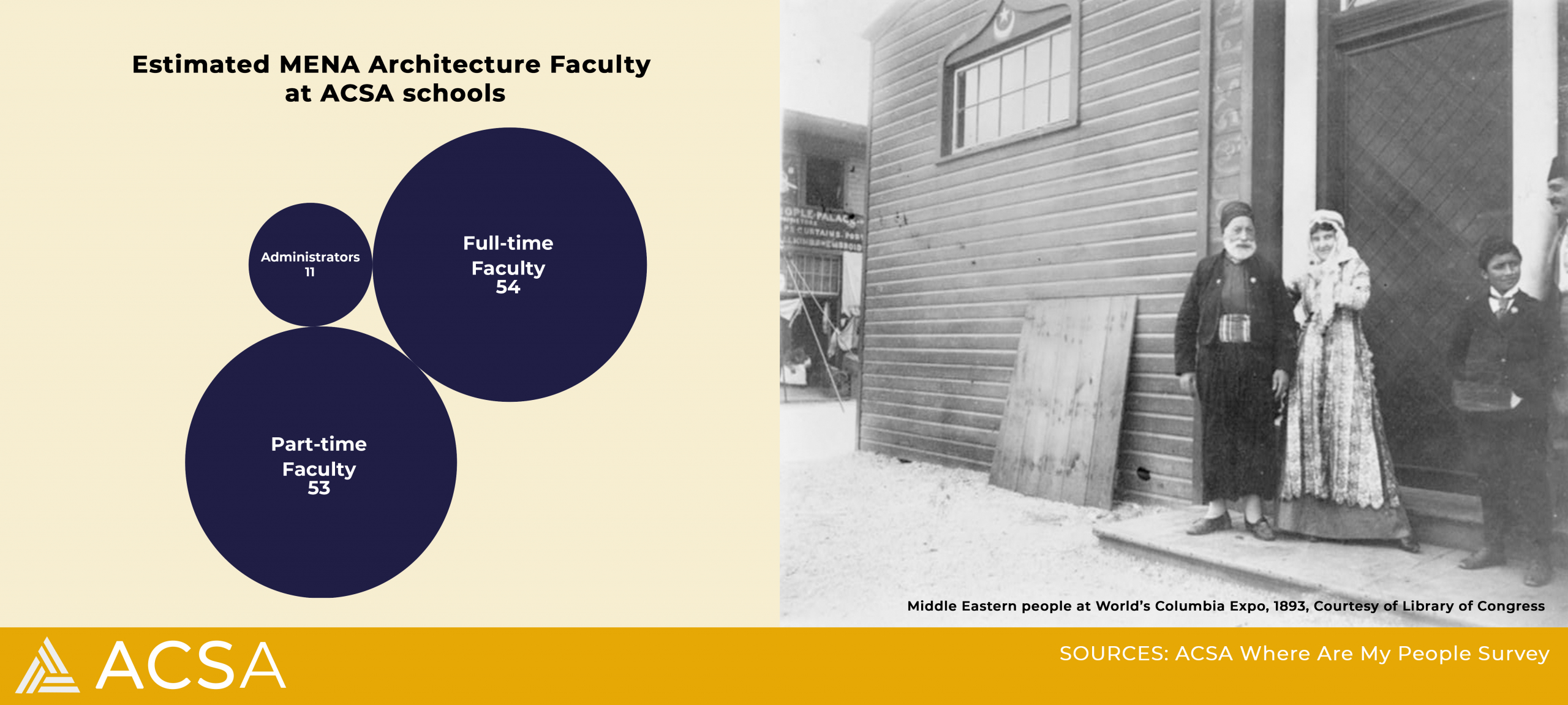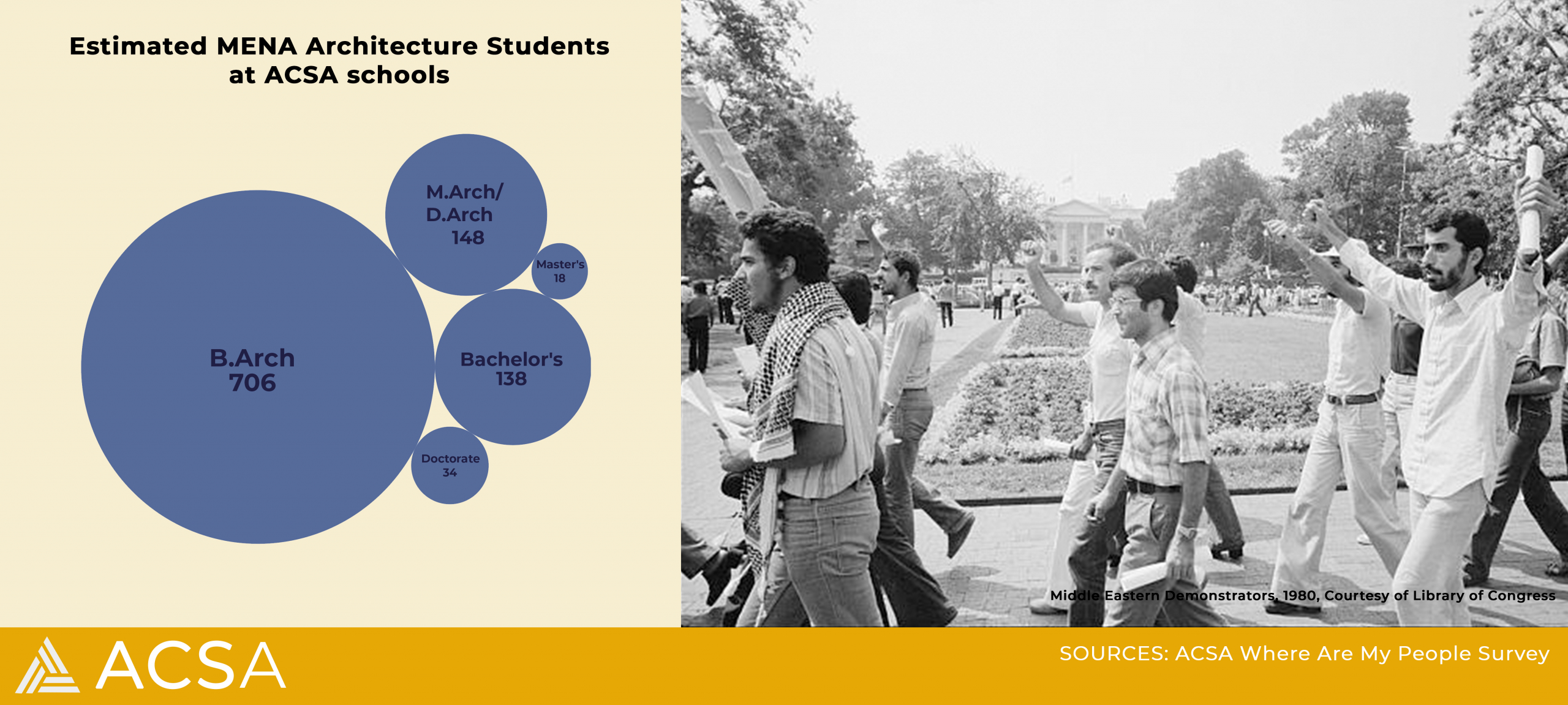Where Are My People? Middle Eastern and Northern African in Architecture
Where Are My People? Middle Eastern and Northern African in Architecture
Kendall A. Nicholson, Ed.D., Assoc. AIA, NOMA, LEED GA
ACSA Director of Research and Information
July 9th, 2021
In the area of racial diversity, it is commonly known that representation, or the lack thereof, is a discipline-wide issue. Where Are My People? is a research series that investigates how architecture interacts with race and how the nation’s often ignored systems and histories perpetuate the problem of racial inequity. The last piece in the series, Where Are My People? Middle Eastern and North African, covers a group of people who continue to face mass discrimination, and combat popular misconceptions about heritage and religion. For the purpose of this research, I am defining Middle Eastern and North African (MENA) as people who immigrated and the descendants of immigrants from the 22 contemporary nations that make up the Arab League (Egypt, Syria, Lebanon, Iraq, Jordan, Palestine (the West Bank and Gaza), Saudi Arabia, Yemen, Oman, United Arab Emirates, Qatar, Bahrain, Kuwait, Libya, Tunisia, Algeria, Morocco, Mauritania, Sudan, Somalia, Djibouti and the Comoros Islands), as well as the non-Arab countries (Iran, Israel, and Turkey) and other populations such as Armenians, Assyrians, Baha’is, Chaldeans, Copts, Druze and Kurds.
Central to the mission of this research series is the importance of giving voice and space to people from backgrounds who have been historically discriminated against. ACSA is asking questions to help cultivate a better understanding of historical events and the manifestation of modern-day narratives.
Where is the data on Middle Eastern and North African people? Why is it that people are largely confused about who fits in this category? Why does architecture classify this population as White? If we can find MENA people at the top tiers of design institutions then how is discrimination relevant? As always, let’s start with the history.
Despite the widespread belief that all people who look Arab are Muslim, the first wave of immigrants from the Middle East and North Africa were Syrian Christians in the early 1900s. Dating back centuries prior, citizenship and freedom in the United States was tied to race and religion, and as such Middle Easterners had to prove their status on both fronts to gain full rights. Dow v. United States, 1915, documents the multiple appeals made for rights given to a “free white person” as defined by the Naturalization Act of 1790. While George Dow was allowed to naturalize to the United States the standard quickly changed thereafter to exclude people who were culturally different than most free white Americans. The Immigration Act of 1924 set up a quota system limiting the number of immigrants from the Arab and Asian countries and it wasn’t until the 1950’s that the United States saw larger numbers of Muslim from the same region migrate to the U.S.
Contentious events like the Six Day War of June in 1967, and the Iran Hostage Crisis of 1979-1981 have associated the Middle East as a dangerous place and consequently Middle Eastern people as dangerous people. This false narrative was then exacerbated by the horrific events of 9/11/2001. The problem with this narrative is that it is being created by an extreme subset of the millions of Middle Eastern and North African people who live in the United States and abroad. The treatment of MENA people post 9/11 are often characterized by widespread racial profiling and discrimination.
Of the 328 million people living in the United States, 3.1 million identify as Arab, Middle Eastern, and/or North African. This makes up just under 1% of the U.S. population, quite similar to the population of Native and Indigenous peoples. The 2020 United States Census considered adding “Middle Eastern and North African” as a category on the massive data collection effort done every ten years but decided that it was best situated as a subgroup of the White racial category. This is problematic for a lot of reasons, many of which are stated in the quick history referenced above.
In 2018, Statista estimated the total population in the Middle East and North African region was approximately 484 million. This indicates that the 3.1 million residing in the United States is only a small subset of the total population. In the U.S., the largest subgroups of MENA people are Iranian, Armenian, Lebanese, and Egyptian.
Data about Middle Eastern and North African populations from the American Institute of Architects (AIA), American Institute of Architecture Students (AIAS), National Council of Architectural Registration Boards (NCARB), National Organization of Minority Architects (NOMA), National Architectural Accrediting Board (NAAB), and the Association of Collegiate Schools of Architecture (ACSA) is virtually non-existent. If there was never a time before, we should be make a commitment across architecture to gather data on Middle Eastern and North African designers, educators, and architects.
As a classification, the discipline has lauded the contributions of the Arab world through buildings like the Dome of the Rock in Jerusalem, the barrier breaking design work of Zaha Hadid, and the design leadership of administrators like Amale Andraos, Mohsen Mostafavi, and Nabyl Chenaf, to name a few. However, we have essentially rendered the entire group of people invisible by ushering students, faculty and other stakeholders into the category of “White or Caucasian.” Not only is the data necessary for us to know who we are serving, but it’s important for us to acknowledge the contributions in ways that respect and honor the differences of all people in architecture.
Acknowledging this lack of data, ACSA conducted a survey of Middle Eastern and North African students and faculty in the spring of 2021. However, data for both groups had to be estimated because the federal entities that gather data for institutions do not currently collects distinct data on MENA people. As such, all of the numbers for faculty and students are estimated. These estimates were derived using the data from school administrators, ACSA records, the U.S. Census, geographic markers and statistics collected by the National Accrediting Architectural Board (NAAB) for other racial categories.
It is estimated that there are approximately 118 faculty in ACSA member schools domestic and abroad. By this estimate, the faculty FTE (Full-Time Equivalent) would be 83 which is 2% of the total faculty FTE of 3,790 for 2019. This does indicate that approximately half of our member schools have no Middle Eastern or North African faculty in the architecture department.
Student data is estimated to total 1,044 MENA students in architecture at ACSA member schools. This breakdown is largest supported by two of the member schools located in the Middle East: American University of Sharjah and the American University in Dubai. That being said, the largest number of MENA students are estimated at the B.Arch level and the two aforementioned schools account for nearly three-fourths of that population. Our hope at ACSA is that this survey data is collected by other organizations that can provide more reliable data on faculty, student and other metrics. Until then, we will continue to push for a more distinct count of MENA people in national data collection efforts inside and outside of architecture.
With limited data, the research and statistics presented on the Middle Eastern and North African populations falls short of our typically rigorous research reports. However, the take away is less about the numbers and more about the narrative. The narrative is one of discriminatory practices and gate-keeping. The history of the United States shows how hard this country has worked to ensure that MENA people are “othered” in social interactions while at the same time classifying them as White in large demographic datasets. In doing so, we have allowed for the race of MENA people to be an interpersonal pursuit. I’m suggesting architecture take the lead here and push for social belonging and disaggregation in our datasets. We can’t continue to follow national U.S. standards which allow for the social status and acceptance of MENA people to be predicated on racial determinants like skin color, facial features and the like.
Questions
Kendall Nicholson, Ed.D.
Director of Research + Information
202-785-2324
knicholson@acsa-arch.org

 Study Architecture
Study Architecture  ProPEL
ProPEL 



